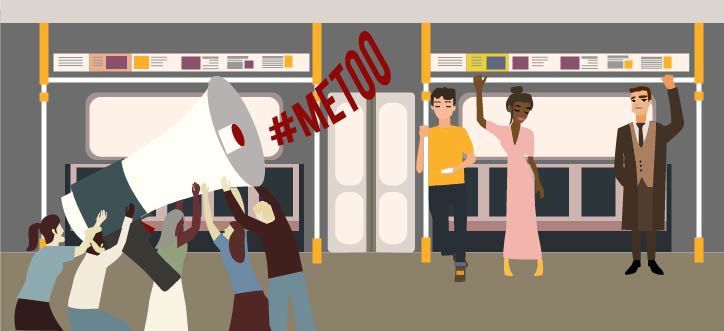Bystanders must derail sexual harassment on CTA
Bystanders must derail sexual harassment on CTA
December 3, 2018
In September, CBS reported a woman sexually assaulted on the Blue Line at the Cicero stop. The anonymous woman got off the train at the next stop to escape the man.
A male passerby stepped up and gave her his phone to call the police, scaring the assailant off.
This is one example of a bystander who saw something and said something. More often, women on the CTA are sexually harassed as numerous bystanders look the other way. A 2016 study by Australian psychologists found that women are more likely than men to intervene when witnessing sexual harassment.
The CTA does not provide public statistics on sex crimes on its website.
A June 2017 report released by New York Sen. Diane Savino found that over the past five years more than 3,200 people in New York have been victims of sex crimes in the city’s public transit system.
During the height of the Me Too movement, many men supported women by tweeting #MeToo and speaking out against rape and sexual harassment. Now, men need to support women by taking action, not standing to the side.
Sexual harassment doesn’t always appear violent. It’s often a creepy person breathing down your neck who just won’t take “no” for an answer.
The website claims the CTA does not tolerate harassment and that “everyone deserves the right to a safe and comfortable travel environment,” yet security cameras are the only safeguard.
On its website, the New York Metropolitan Transportation Authority details how bystanders can safely intervene. It recommends calling 911 when witnessing an incident and escorting the victim to a police station. CTA’s 2009 anti-harassment campaign—which identified touching, rude comments and leering as harassment—advised victims to come forward, not bystanders.
A couple weeks ago, two of my female friends told me about a man on their CTA train who had gone up and down the car giving the passengers—all female—hugs without permission, and none of the male bystanders said or did anything.
Another friend told me about a time she was on the Red Line when a man continuously touched her hand, telling her how beautiful she was, as he smacked his lips for numerous stops, and no one did anything to ease her visible discomfort. She felt the need to shower afterwards.
I don’t expect men to knock out someone who’s harassing women on the CTA. Helping someone who is being harassed can be as simple as pretending to know them from some distant, fictional place and standing in the harasser’s way, scaring them off. This is known as “girl code” among my circle of friends, but it really should be “human code.”
It’s time for male bystanders to put their money where their mouths are and stand up for women before we need to shout “Me Too.”








